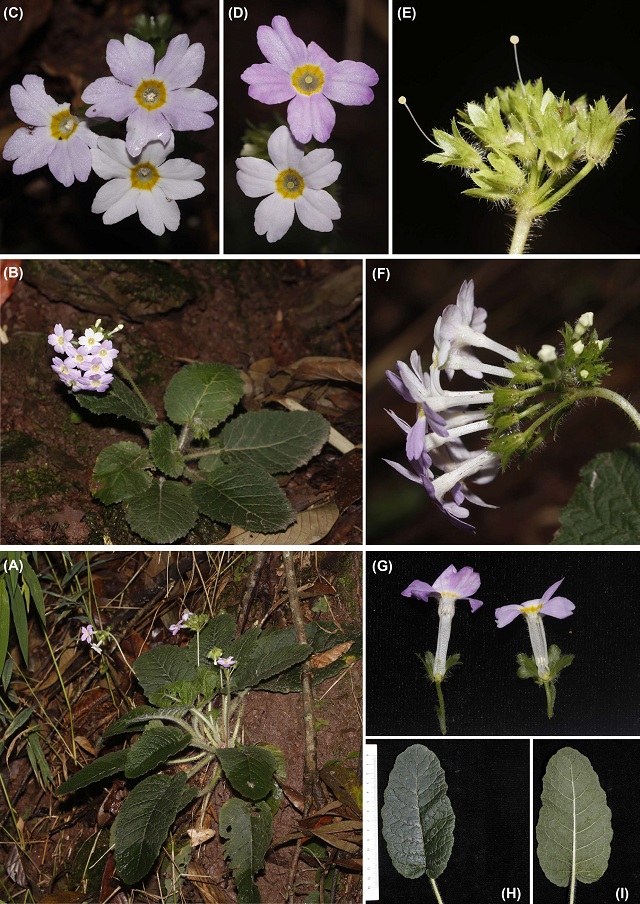The genus Primula L. is the largest genus in Primulaceae. Southwestern China is one of the diversity centers of Primula, with more than 300 species. During theirrecent field expedition to survey plant diversity in south Yunnan, researchers from Xishuangbanna Tropical Botanical Garden (XTBG) collected specimens of Primula.
After examining the morphological and anatomical characters in detail of the specimens and closely related species, the researchers confirmed that the species is new to science. They named the new species as Primula zhui to honor Prof. ZHU Hua of XTBG,who worked on plant taxonomy and biogeography and made great contributions to the tropical flora in China, especially in south Yunnan. They got the new species published in Nordic Journal of Botany.
Primula zhui is similar to P. intanoensis T. Yamaz. from Thailand and P. calyptrata X. Gong & R.C. Fang from China. But it is easily distinguished from P. intanoensis by its longer corolla tube (1.4–1.6 cm long, 2.0–2.5 times as long as the calyx) and distylous flowers, and from P. calyptrata by its ovate to ovate-elliptic leaf blade and distylous flowers.
Primula zhui is endemic to south Yunnan, southwest China, only known from its type locality, Yixiang, Simao, Pu’er. It grows in the understory of subtropical evergreen broadleaf forests, at 1300–1500 m above sea level.
Primula zhui is assessed as ‘Critically Endangered’ according to the IUCN standard. During the preliminary field survey in Simao County, the researchers found only three populations and less than 50 individuals in the type locality of about four km2 area in Yixiang. Forests are severely fragmented in this region. The species is endangered due to the increasing deforestation and habitat fragmentation.
Contact
TAN Yunhong Principal Investigator
Center for Integrative Conservation, Xishuangbanna Tropical Botanical Garden, Chinese Academy of Sciences, Menglun, Mengla, Yunnan 666303, China
E-mail: tyh@xtbg.org.cn

Primula zhui sp. nov. (A) and (B) habit, (C) thrum flowers in anterior view, (D) pin flowers in anterior view,(E) inflorescence, showing the persistent calyx, (F) inflorescence in lateral view, showing the corolla tube,(G) pin and thrum flowers, (H) leaf blade in adaxial view, (I) leaf blade in abaxial view.
(Images by DING Hongbo)

